Compost is good for the plants. We show why every gardener should start and build a compost heap and how to use compost properly.
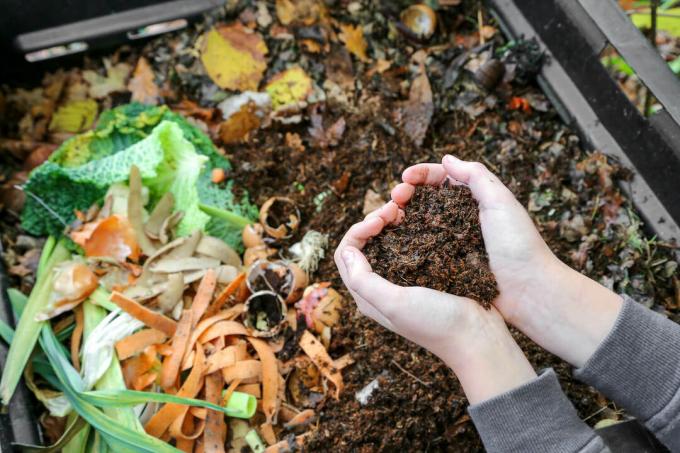
In the past, proper compost was an integral part of every garden. Why should you spend expensive money on fertilizer when you can make the Rolls-Royce of fertilizers yourself in the garden? Compost is not only rich in the nutrients and trace elements that are so important for plants, but also offers an environmentally friendly way of disposing of your own fruit and vegetable waste. Definitely two reasons that speak strongly in favor of your own compost heap!
If you look at some compost heaps today, unfortunately, they often resemble organic waste heaps. Either the rot is not getting off to a good start or it stinks rotten and even the lawn clippings from a year ago can still be seen. If you want to close the biological cycle with your own compost, you should read the following sections carefully. With our tips everyone can create a full-fledged compost.
contents
- The composting plant - this is how it should be built
- What actually happens in the compost?
- And what is allowed in the compost?
- Compost care made easy!
- Use compost properly
- Here is a purchase recommendation for the impatient!
The composting plant - this is how it should be built
A good location is essential so that the biological waste becomes valuable humus as quickly as possible. A partially shaded place with a water-permeable surface is best suited for this. In full sun there is a risk that the compost will dry out. After choosing the location, it must now be considered what the compost should be made of. Simple board constructions are suitable for this (e.g. B. from old Euro pallets) or the purchased variant, mostly made of plastic. In the opinion of the Plantura team, a good compost should have the following 3 properties:
- A water-permeable soil is essential!
- There should be as many ventilation slots as possible on the sides without affecting the stability of the composting facility.
- Build a two-chamber system. The first chamber is for composting and the second for collecting garden waste.
By now you are probably wondering why gardening waste should be collected beforehand. Please be patient, because we will come to this point later. In addition to the location and structure of the composting plant, the size is a decisive factor. Of course, this depends on the amount of garden waste you have. In any case, the system should be larger. A size of 1m x 1m x 1m, i.e. 1m3, the compost heap should already have. As a rule of thumb, the larger the composting facility and the content, the faster the composting process.
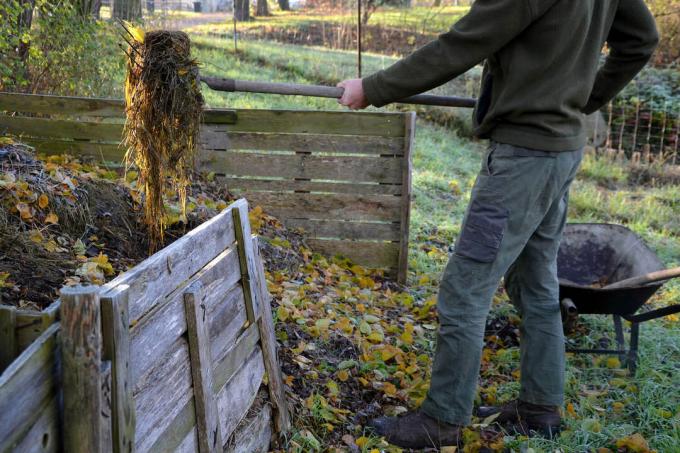
What actually happens in the compost?
Nothing else happens in a compost heap as in a forest floor. Organic matter is broken down by microorganisms and small animals such as earthworms. However, the composting plant ensures the perfect living conditions for the little helpers, which means that the compost is converted much faster. So that the organisms in the soil are doing well, heat is very important. In addition, the compost heap should be damp, but not wet. If there is still good ventilation, the microorganisms are working like crazy! If you follow the Plantura tips for setting up the composting plant, half the rent is already paid. It is just as important how the litter or garden waste is added to the compost. Only if enough coarse material is always worked in can a sufficient air supply be ensured and rot is prevented. This is why collecting garden waste before composting is so important. Often there is only fine garden waste such as lawn cuttings. If too much of it is put on a compost, rot can occur because the fine lawn does not let air through. In the collecting container, the lawn can first dry out a little (it should anyway!) And later mixed with coarser garden waste. Attentive readers will have noticed: In principle, a compost heap wants to be cared for like a plant. Always keep it moist, but not waterlogged! And most plants feel most comfortable when it is warm.
And what is allowed in the compost?
Unfortunately, not all biological waste can be put on the compost. Some foods can rot due to their sugar content and should therefore only be used in small quantities. Animal products can be carriers of pathogens that are not killed in the compost. We have put together a table for you so that nothing goes wrong. The best thing to do is to print it out right away!
| That belongs on the compost | special features |
| Garden waste | |
| Shrub and hedge trimmings | Cut or chop into small pieces |
| Tree pruning and larger branches | rot very slowly |
| leaves | Chopping with a lawnmower promotes rotting |
| Windfalls | only in small quantities, otherwise rot |
| Lawn clippings | only withered and mixed with coarse waste |
| Crop residues (e.g. B. Cabbage stalk) | |
| Kitchen waste | |
| Tea and coffee also with filter paper | |
| Crushed eggshells | only boiled eggs, otherwise there is a risk of salmonella |
| Raw vegetable scraps (e.g. B. Potato peels) | distribute well in the compost |
| Citrus peel | rot very slowly |
| Other fruit scraps | only in small quantities |
| This does NOT belong on the compost |
| Cooked leftovers |
| Animal products |
| Pet litter |
| Cigarette butts |
| Vacuum cleaner bags |
| Infested plant material |
| textiles |
| Oils |
| Wood or coal ash |
| Household garbage |
Compost care made easy!
First of all: if the compost is in a good location and the garden waste is mixed in well, maintenance is hardly necessary. In the event of prolonged drought, the compost heap can be easily watered so that the soil organisms can work properly again. If the compost is too wet in the middle and starts to smell putrid, the compost should be mixed vigorously. Mixing it distributes the moisture and also improves ventilation. Adding the right soil organisms to a newly created compost heap can accelerate the rotting process.
Use compost properly
The compost should be ready after 6 to 12 months. This can be recognized by its fine structure and the earthy smell, which is also reminiscent of forest floor. The compost is now ready to use! If necessary, the humus can still be sieved in order to recompost larger plant residues. Then the humus can simply be added to the plant bed. A slight incorporation into the ground is definitely recommended. With the self-made fertilizer you are not only doing your plants a favor. Here we have summarized the most important positive influences for you:
- Full-fledged fertilizer with all plant-relevant nutrients
- Improvement of the soil activity of microorganisms
- The soil structure is positively influenced
- Direct composting in your own garden is very environmentally friendly
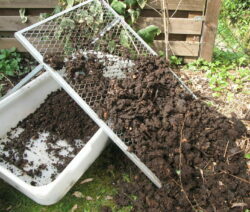
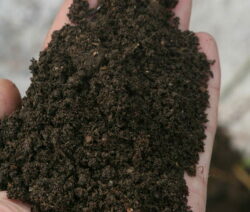
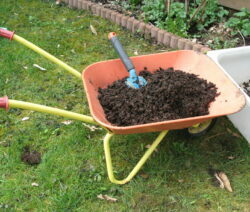
Here is a purchase recommendation for the impatient!
If you don't have the time to build your own composting plant, it is worth purchasing a high-speed composter. These high-speed composters are usually made of plastic and, thanks to their construction, warm up the compost particularly quickly. In addition, they isolate the garden waste at night and keep it warm. Due to the additional heat, the microorganisms work even faster and the compost is ready in less time. Most of these models also have a removal flap in the bottom. The finished humus can simply be removed there, while fresh garden waste is refilled above



